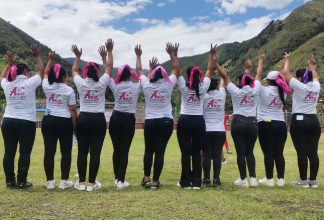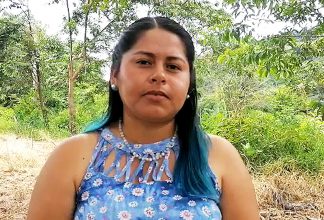Seeking Out New Paths After a Polarised Referendum
Colombia’s peace process led by current President Juan Manuel Santos and the guerrilla group FARC suffered a major defeat when the plebiscite showed that the NO vote had won. 50,2% of Colombians voted against the accord with 49,8% in favour and although it was only a small margin, the uncertainty is over. The fact that only 37% of the electorate voted is another clear sign that the government did not succeed in mobilising support and credibility for the peace accord.
Since 2012, Colombia’s government and FARC leaders have been negotiating a peace agreement in Havana, with Cuba and Norway as guarantors, looking for a demobilisation process that can help the country to reach “The Peace”. Since the beginning, the president has stated that the people will have the final decision on the agreement through a referendum.
The Colombian Constitutional Court stated that if the NO campaign wins, it will inhibit the implementation of the Final Agreement. However, it has also clarified that although the accord failed this time, the President will together with the Constitutional powers that be work to bring peace to the country, but with a different agreement. With the NO victory, the President has recognised the defeat and invited all political parties to find a way to continue the negotiations with FARC in order to finally reach peace.
The President also announced that the bilateral cease-fire will continue and ordered negotiators to travel to Cuba to talk with FARC. Meanwhile, FARC announced that they will carry on with the peace process. Nevertheless, Colombians are now full of questions:
- What is going to happen with the special peace group of the United Nations that was created in order to follow up the end of the conflict?
- What will happen to the disarmament and reincorporation processes?
- Will Colombia maintain the financial and technical support announced by the international community?
- What are the rest of FARC feeling?
Not the actual leaders, but the people who were inside the conflict as a result of the context, those who were forcibly recruited for example, that really want the nightmare to end, but the decision is not in their hands.
Today the whole world has its eyes on Colombia. A country that presents itself with a strengthened democracy, where people can vote for whom they like and say what they believe in, but also where the wishes of the victims in underdeveloped areas have passed by unnoticed. The map of the final results of the referendum show a polarised country where the majority of the areas affected by the conflict voted YES while cities and areas less affected voted against the agreement. As an example, the town of Bojaya, one of the symbols of the cruelty and horror of the armed conflict, voted in favour of the accord by a massive 96%, while Medellin, the most developed city in the country voted against with a tally of 62%.
Civil society now has the responsibility to find creative ways to reach reconciliation in this extremely polarised country and win legitimacy for possible options that may be put on the table. Now is the time when civil society organisations will have to show the strength that they have gained during the last decades with the support of the international community. But also, it is time for the international community to make its presence felt and help Colombians find new ways of building peace with FARC and ELN, but even more importantly, with each other, the living and the dead, the victims, victimisers and everybody in the middle.
Colombia is today enduring one of if its toughest periods as its citizens are completely polarised when it comes to the meaning of peace. However, they all agree that the country does not deserve even one more death because of the internal armed conflict.
Background
Colombia has been a battlefield involving the government, paramilitaries and guerrillas, such as FARC, Quintin Lame, M-19, EPL and ELN, for more than 50 years.
FARC, the Revolutionary Armed Forces of Colombia is the largest guerrilla group, and took up arms against the government in 1964. According to the government agency for victims, Unidad para la Atención y Reparación Integral para las Víctimas, the conflict has resulted in 8.131.269 victims, including 6.883.513 forced displacements, 28.900 kidnappings, 266.300 killings and more than 8.000 children who have been forcibly recruited by different armed groups.
The final document of the accord, was signed by FARC and the government on September 26th in Cartagena, with the presence and support of leaders from around the world. This included the General Secretary and the President of the Security Council of the United Nations, presidents from Argentina, Mexico, Bolivia, Costa Rica, Salvador, Venezuela, the former King of Spain, the ex-presidents of Mexico, Uruguay, Spain, the US Secretary of State, the Swedish Foreign Minister and the presidents of the Organization of American States, the World Bank, the International Monetary Fund, the Inter-American Development Bank, among others. International support proved however inadequate when it came to winning the trust of the Colombian voters.


